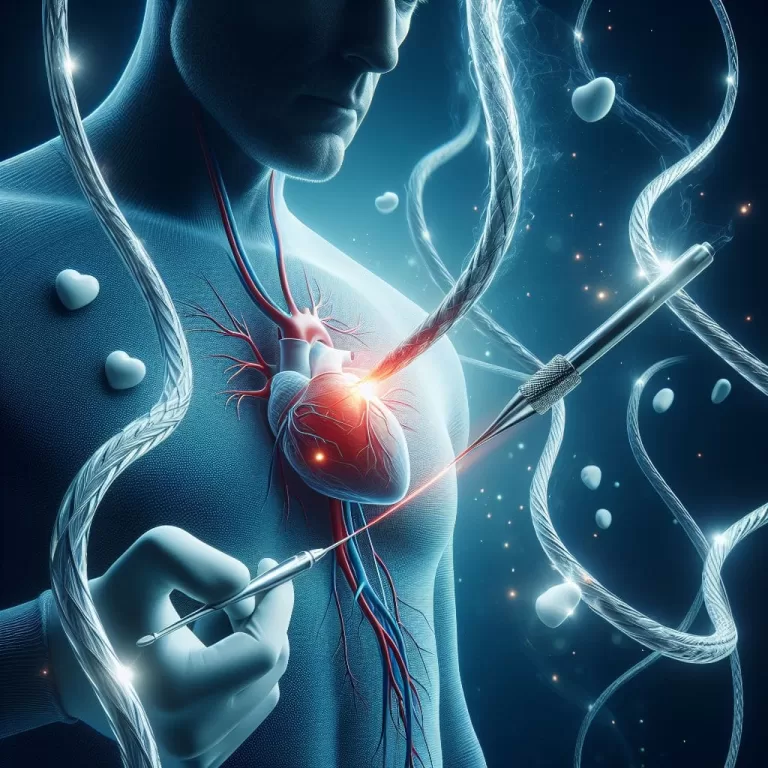Peripheral Artery Disease
**Peripheral Artery Disease (PAD)**
**Description:**
Peripheral Artery Disease (PAD) is a common circulatory condition that affects the arteries outside of the heart and brain, particularly those in the legs and feet. It occurs when plaque builds up in these arteries, narrowing or blocking them, reducing blood flow.
**Symptoms:**
* Pain, cramping, or numbness in the legs when walking or exercising (claudication)
* Cold or numb feet
* Slow-healing sores on the legs or feet
* Discolored or brittle toenails
**Causes and Risk Factors:**
* Atherosclerosis (plaque formation)
* High blood pressure
* Diabetes
* Smoking
* Obesity
* Physical inactivity
**Diagnosis:**
* Physical exam
* Ankle-brachial index (ABI)
* Doppler ultrasound
**Treatment:**
* Lifestyle modifications (smoking cessation, exercise, healthy diet)
* Medications (aspirin, statins, ACE inhibitors)
* Percutaneous transluminal angioplasty (PTA) or stenting
* Surgery (bypass surgery or endarterectomy)
**Complications:**
* Critical limb ischemia (severe pain and tissue loss)
* Skin ulcers
* Amputation
**Prevention:**
* Managing risk factors (hypertension, diabetes, etc.)
* Quitting smoking
* Exercising regularly
* Maintaining a healthy weight
Stents: A Comprehensive Guide to their Applications in Medical Procedures

What is a stent? A stent is a tiny tube that your doctor can insert into a blocked passageway to keep it open. The stent restores the flow of blood or other fluids, depending on where it’s placed. Stents are…
Symptoms of Peripheral Artery Disease (PAD) and How to Manage Them

The hallmark symptom of peripheral artery disease (PAD) is pain when walking. More advanced PAD may cause pain at rest and other symptoms that need immediate attention. Like coronary artery disease, PAD results from plaque buildup in certain arteries. That…
What is Carotid Surgery: Overview, Benefits, and Expected Results

Definition and Overview A carotid surgery, more specifically known as a carotid endarterectomy, is a surgical procedure wherein the inner lining of the carotid arteries is removed in the event of blockage that restricts efficient blood flow. The purpose of…
What is Arterial Doppler: Overview, Benefits, and Expected Results

Definition and Overview An arterial doppler, also known as a vascular doppler or a vascular ultrasound, is a painless and non-invasive diagnostic procedure performed to visualize and evaluate the function of arteries and blood vessels. It creates real-time images of…
What is Peripheral Vascular Disease?

Peripheral vascular disease Peripheral vascular disease (PVD), also known as peripheral arterial disease, is a common condition in which there is a slow narrowing and hardening of the blood vessels in the legs. This causes poor blood flow and a…
